Imagine you’re a member of an orchestra. You’ve spent countless hours rehearsing and fine-tuning your performance, but when the conductor raises their baton, there’s a moment of confusion.
Who is supposed to start?
Who leads the melody?
Who comes in with the harmony?
At this moment, you realize the importance of clear direction and defined roles.
This is where a tool like the RACI chart comes in.
In project management, the “symphony” of team tasks and responsibilities can often lead to similar confusion. As teams grow and projects become more complex, keeping track of who’s doing what becomes increasingly difficult. The result? Miscommunication, overlooked tasks, and a melody of work that’s not quite in harmony.
A RACI chart is a simple yet powerful collaboration tool designed to bring clarity and structure to a project. Let’s dive deeper into the world of RACI charts, including what they are, why they’re useful, and how best to use them.
What is a RACI chart?
Also known as a responsibility assignment matrix or RACI matrix, a RACI chart is a project tool that clarifies the roles and responsibilities in a project. “RACI” itself is an acronym that stands for Responsible, Accountable, Consulted, and Informed — the four main roles in any project.
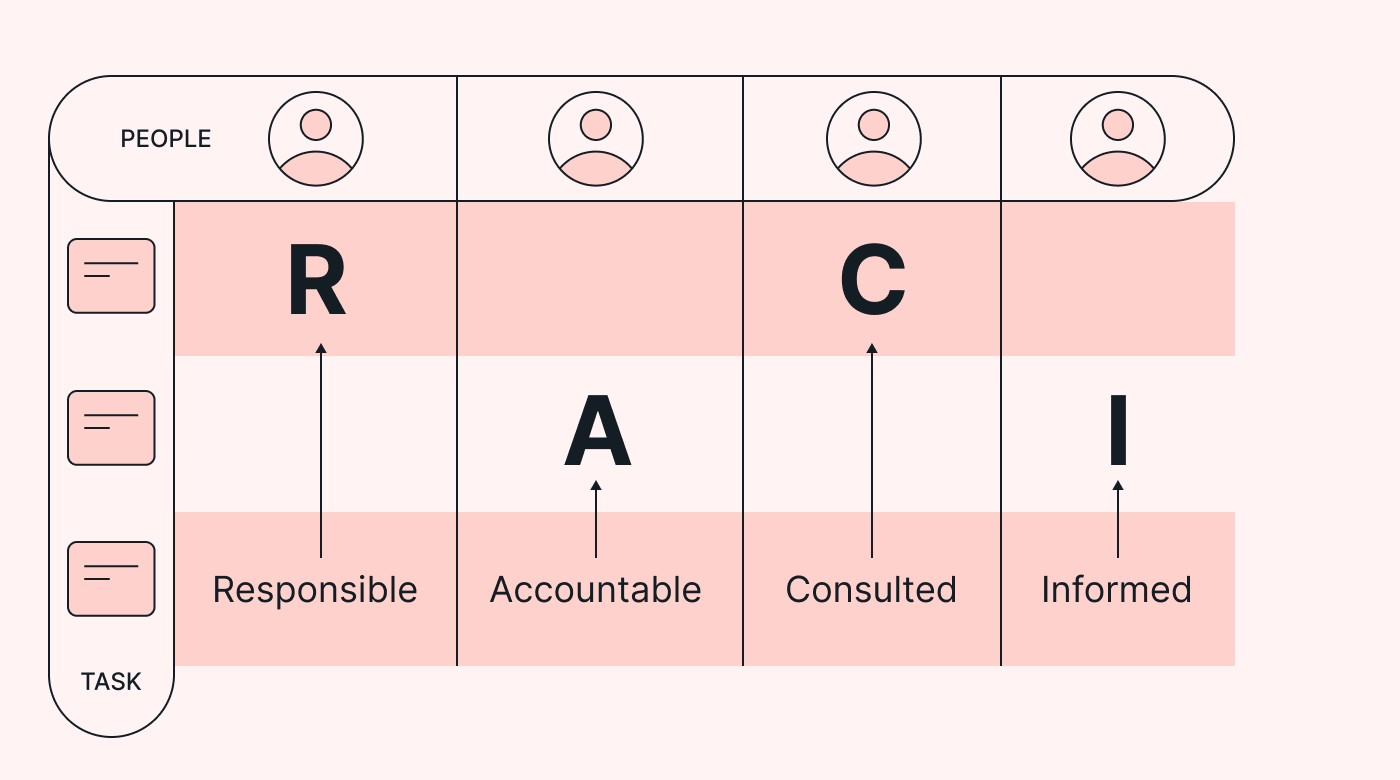 |
Responsible
These are the individuals, pairs, or groups who do the work to complete the task or deliverable. Each task should have at least one responsible person.
Accountable
These are the individuals, pairs, or groups who delegate and review a team’s work. They are typically in a leadership or management role and ensure that the responsible person or team knows their expectations and completes the work on time. Each task should have only one “Accountable” person.
Consulted
These individuals provide input and feedback on the work being done. They have a stake in the outcome because it could affect their current or future work. Not every task needs a consulted person, but the project manager should consider all possible stakeholders when creating the RACI chart.
Informed
These are the individuals or groups that need to be kept up-to-date on the progress of a project but don’t need to be consulted for decision-making. They might include the heads or directors of teams or the senior leadership in a company.
A RACI chart can help ensure clear communication and smooth workflows, as well as prevent confusion about who is doing what in a project. It’s especially useful in larger teams or complex projects in which multiple people or departments are involved.
Why is a RACI chart useful?
A RACI chart is a tool you can use to make your projects run more smoothly. But it takes time to create, and you might not need it for every project.
Here’s a look at why a RACI chart is helpful so you can decide if it will help you better manage your teams:
 |
Clear role definition
A RACI chart ensures that everyone knows exactly what they need to do and who is responsible for each given task or decision. It helps eliminate confusion, which is especially important in complex projects that involve multiple individuals.
Improved communication
Using a RACI chart makes it easier to communicate with everyone on the team and ensure that the right people are involved in the right discussions. It also reduces the chances of important information being overlooked or missed.
Conflict prevention
A RACI chart can prevent conflict since it clarifies who’s responsible for each task. It ensures that everyone on the team knows their role and understands who has the authority to make decisions. Clarity around who is responsible for what reduces the chances of disagreements, misunderstandings, and duplicate work.
Teams can work together smoothly and avoid conflicts that can arise from confusion or overlapping responsibilities.
Efficient project execution
A RACI chart ensures that all bases are covered, making project execution smoother and more efficient. Because each task in a RACI chart has a defined owner, nothing falls through the cracks. There’s no room for ambiguity or “I thought you were doing that” moments because everyone knows what their role is.
Using a RACI chart is a proactive approach to avoiding misunderstandings and ensuring that all tasks are taken care of.
When to use a RACI chart
In the world of project management, timing is everything — especially when deciding when to harness the clarity of a RACI chart.
Here are some examples in which a RACI chart would prove beneficial:
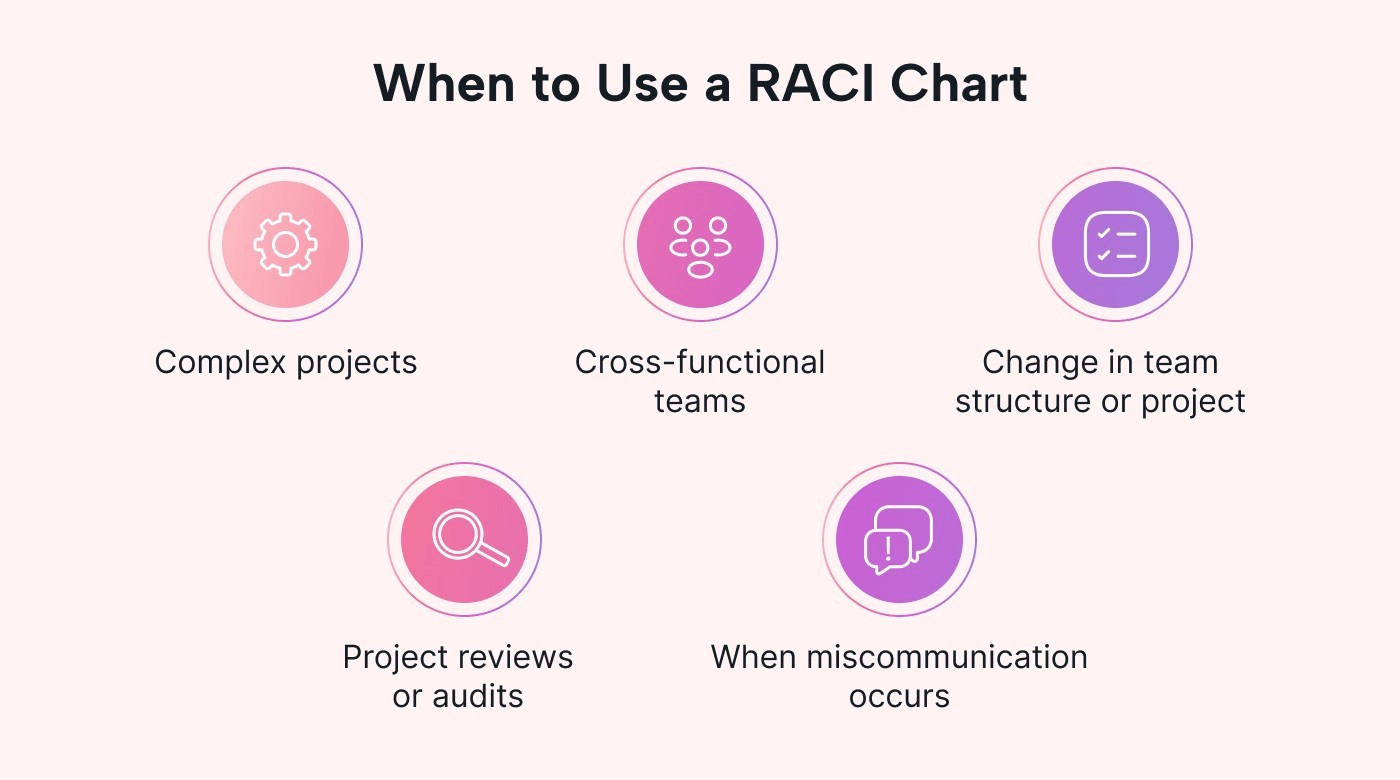 |
Complex projects
Imagine you’re part of a team tasked with organizing a major event, such as a conference or trade show. There are multiple tasks that need to be handled, from setting up the venue and organizing speakers to coordinating logistics and promoting the event.
There might be confusion about who is responsible for each task in such an event, which can lead to delays and reduce the event’s chances of success. A RACI chart promotes team collaboration throughout the project by ensuring each person knows their responsibilities and who to report to.
Cross-functional teams
Working together across different functions can revolutionize your team’s approach to project tasks. It can improve project results, foster a sense of team unity, and boost innovation. In fact, 83% of “digitally maturing” companies use cross-functional teams, compared to 71% of “developing” companies.
However, when teams from different departments come together, it can be challenging to define everyone’s roles and responsibilities. A RACI chart addresses this concern by visually identifying who is accountable and responsible and who should be consulted and informed for each task.
Change in team structure or project
Reshuffling roles and duties can be tough. But with a RACI chart at your fingertips, you can swiftly delegate tasks and make sure everyone is crystal-clear on their updated duties.
Project reviews or audits
During a project audit or retrospective, you might need to provide details about who was responsible for each task and decision. A RACI chart helps you find this information, making it easier to evaluate project performance and identify any areas for improvement.
When miscommunication occurs
Miscommunication can be a significant obstacle for teams and projects, but it’s still all too common. About 30% of employees report that miscommunication has eroded their professional confidence, and 22% have even considered looking for a new job due to it.
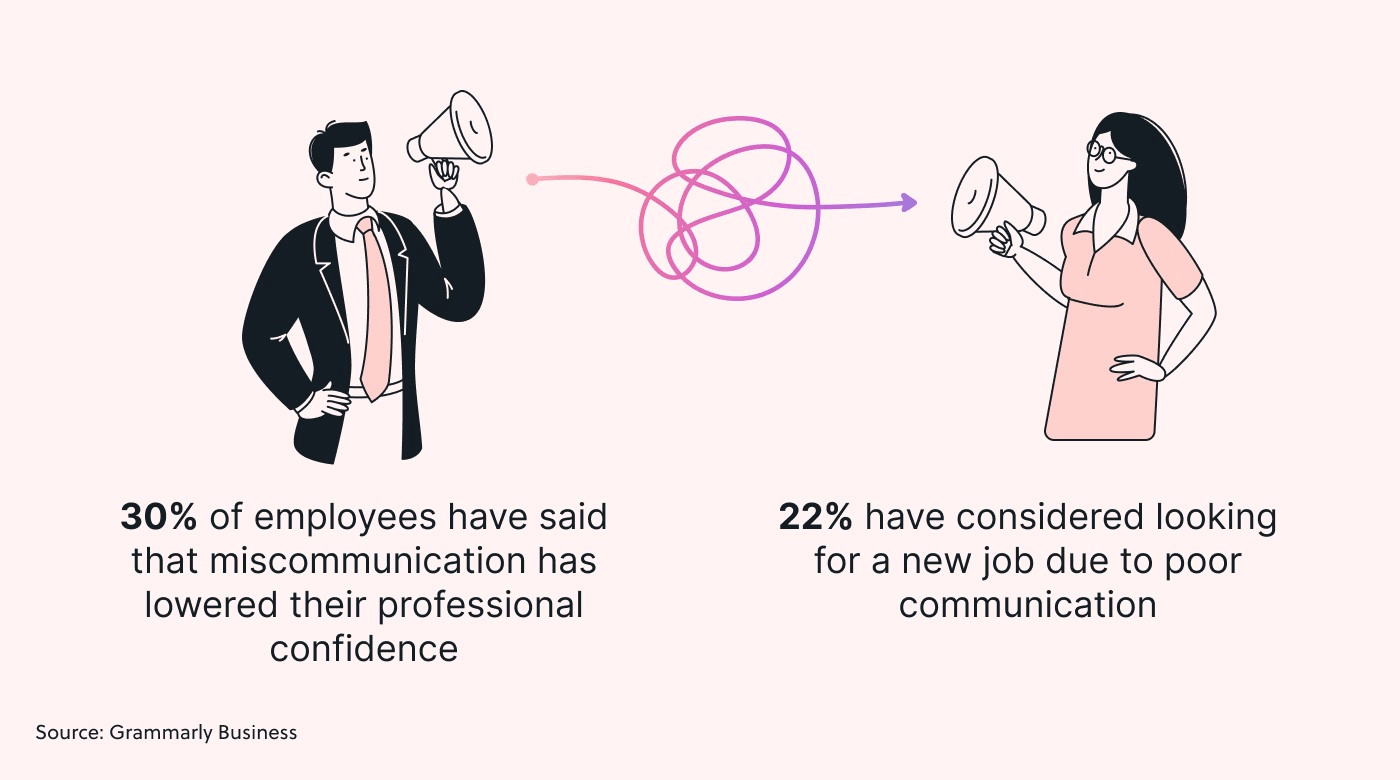 |
A RACI chart alleviates the stress of poor communication since everyone is clear on their roles and responsibilities and who they should be communicating with for each task.
RACI chart example
To get a clearer picture of how beneficial a RACI chart can be and how it functions, let’s look at a real-world example: a team responsible for a product launch.
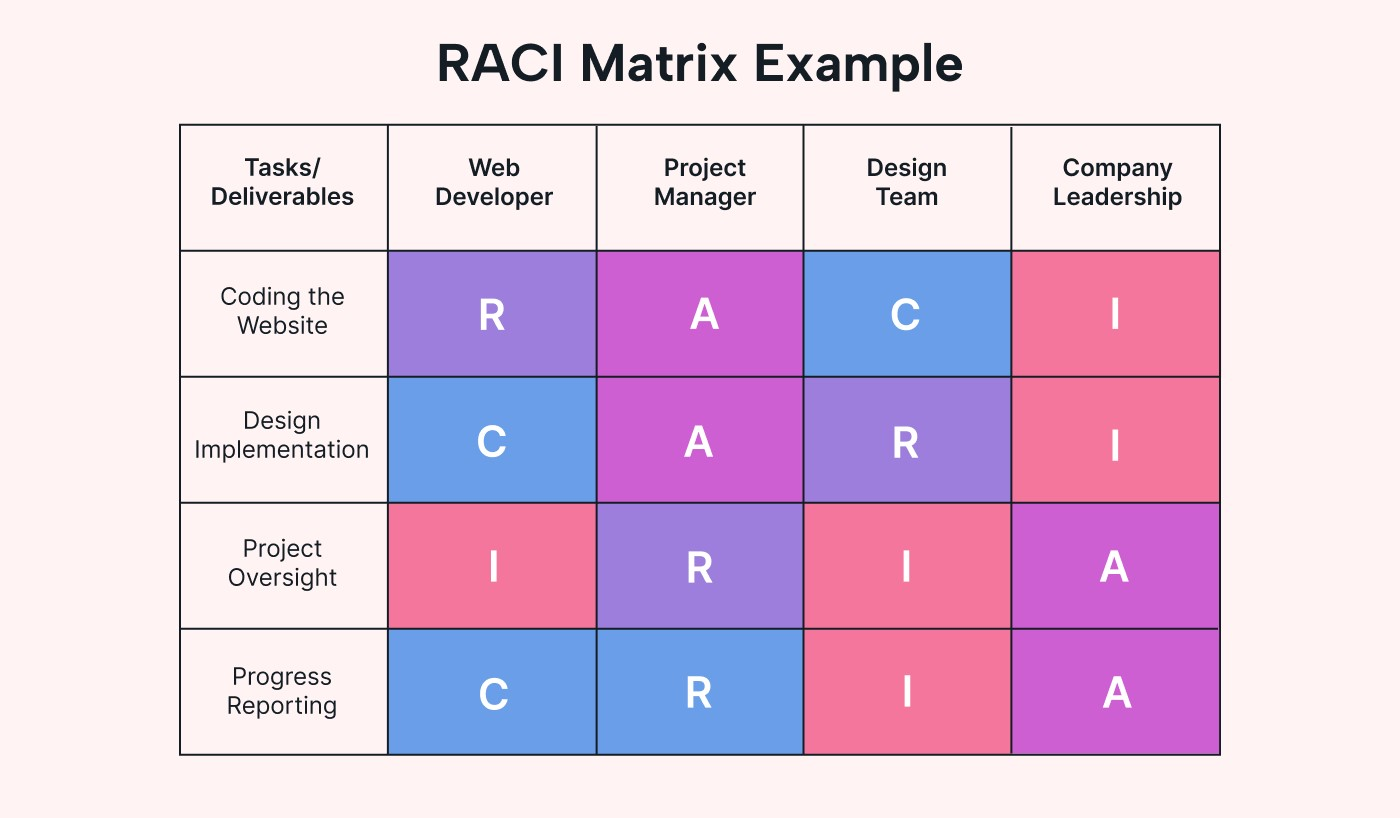 |
In this example, the project manager is responsible for coordinating the product launch and developing the launch plan.
The VP of product is accountable for these tasks, meaning they have the final say and ultimate ownership of them.
The web developer is consulted on progress reporting and design implementation for the project, meaning their input is sought before decisions are made.
The design team is informed about the progress of the tasks, meaning they are kept updated but do not have a direct role in the decision-making.
How to create a RACI chart
Ready to create a RACI chart of your own? Follow the step-by-step guide below to create a chart for your team. To walk through the steps, let’s consider the same scenario of a product team in charge of a product launch.
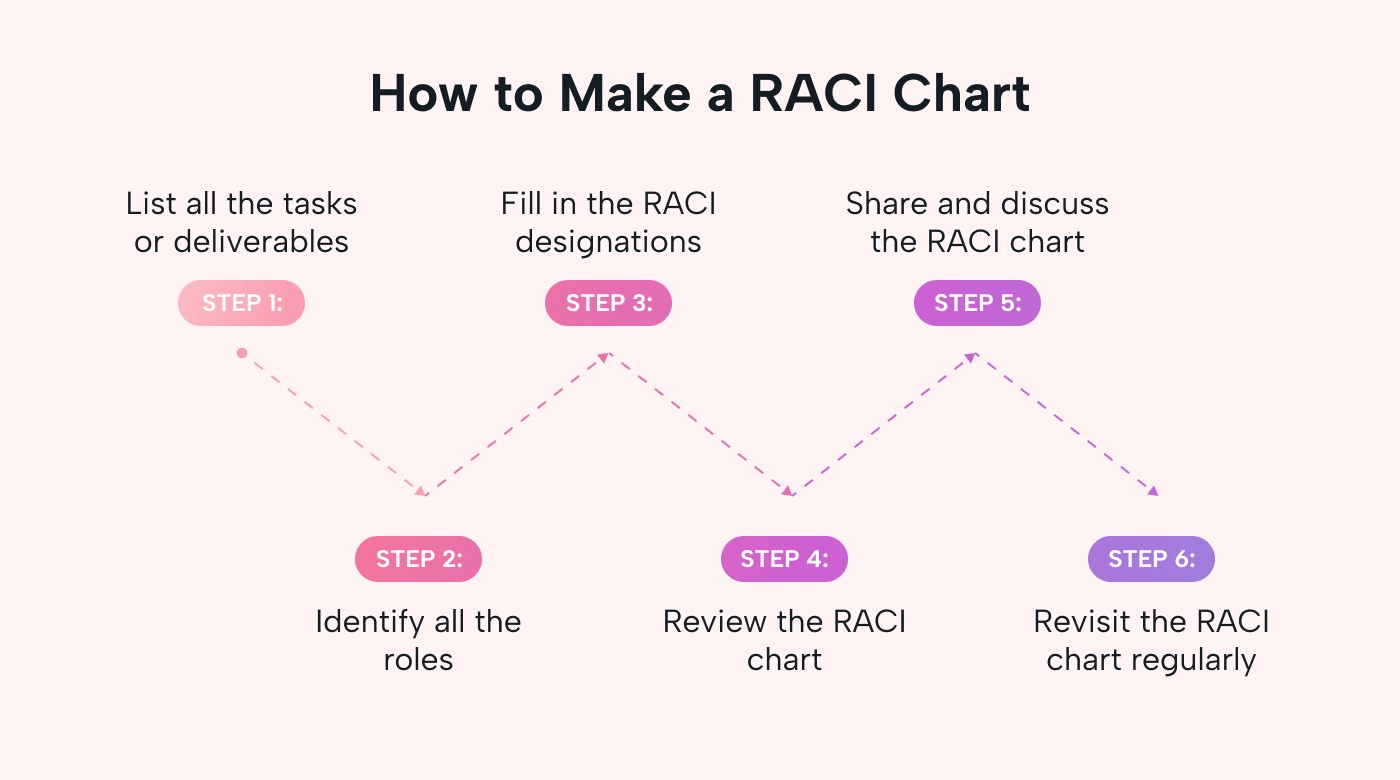 |
Step 1: List all the tasks or deliverables
Identify all the tasks or deliverables that your team needs to complete for the project. Include everything from the initial planning to execution and follow-up activities. List these tasks in a table, creating a row for each one.
For a product launch, this might include the following:
- Market research
- Developing a marketing strategy
- Designing the product packaging
- Organizing promotional events
- Managing social media campaigns
Step 2: Identify all the roles
Next, list all the roles involved in the project. This could be individual people, teams, or departments. It’s important to identify everyone who will have some degree of responsibility or involvement in the tasks listed in Step 1. Create a column for each role in your table.
For our product launch, the roles might include the following:
- Product manager
- Marketing manager
- Graphic designer
- Event coordinator
- Digital marketer
Step 3: Fill in the RACI designations
A RACI chart is typically set up as a matrix. Down the left side (rows), list the project’s tasks or deliverables. Along the top (columns), list the roles or individuals involved in the project.
Fill each cell in the matrix with one of the RACI letters, indicating the type of involvement that role or individual has in that task.
For each task and role, assign one of the following RACI designations:
- Responsible (R): Who is doing the work? These individuals are the doers and must perform the work to complete the task or deliverable.
- Accountable (A): Who has ultimate ownership? This is the person who delegates the work and has the final decision. There should be only one “A” assigned to a task.
- Consulted (C): Whose opinions are sought? These individuals, who are often subject matter experts, are the ones who provide input and advice.
- Informed (I): Who needs to be kept informed? These individuals are the ones who need to be kept up to date on the project’s progress but don’t need to be formally consulted.
In our product launch scenario, the marketing manager might be responsible for developing the marketing strategy. The VP of marketing could be accountable for its success, and the product manager and sales team may be consulted. The rest of the company would be informed.
Step 4: Review the RACI chart
Review the chart to make sure that every task has at least one “Responsible” and one “Accountable” role assigned and that no tasks or roles have been overlooked. Also, ensure that no task has more than one “Accountable” person. Check for any gaps or overlaps in responsibilities, and adjust as needed.
Step 5: Share and discuss the RACI chart
Once the chart is complete, share and discuss it with the team. Discuss the roles and responsibilities outlined in the chart, and make sure everyone understands their tasks and those of their colleagues. This is a chance for everyone to be clear on their roles and responsibilities, ask questions, and provide feedback.
 |
Step 6: Revisit the RACI chart regularly
Remember that a RACI chart is not a set-it-and-forget-it tool. You should revisit it regularly, especially when changes are made to the team or the project scope. Regular revisiting ensures that the chart stays up-to-date and continues to be a useful tool throughout the project lifecycle.
Use RACI charts for seamless collaboration
Whether you’re launching a new product, redesigning a website, or managing a project, a RACI chart is a tool you’ll want in your team’s toolbox. But to fully harness its power, it should be combined with the right project management app.
Motion allows you to easily assign tasks to specific team members, ensuring that each task has a designated individual responsible. You can establish clarity and accountability for every aspect of the project on one consolidated platform. Motion’s built-in tracking features allow you to monitor the progress of tasks in real time, ensuring that those tasks are on schedule.
Give Motion a go to bring your RACI charts to life and drive your projects to success.
Sign up for a free 7-day trial, and cancel anytime.





